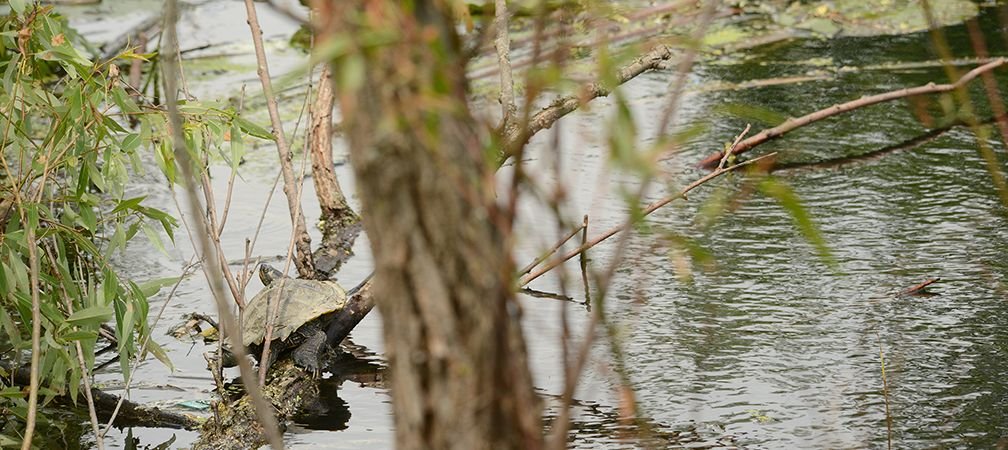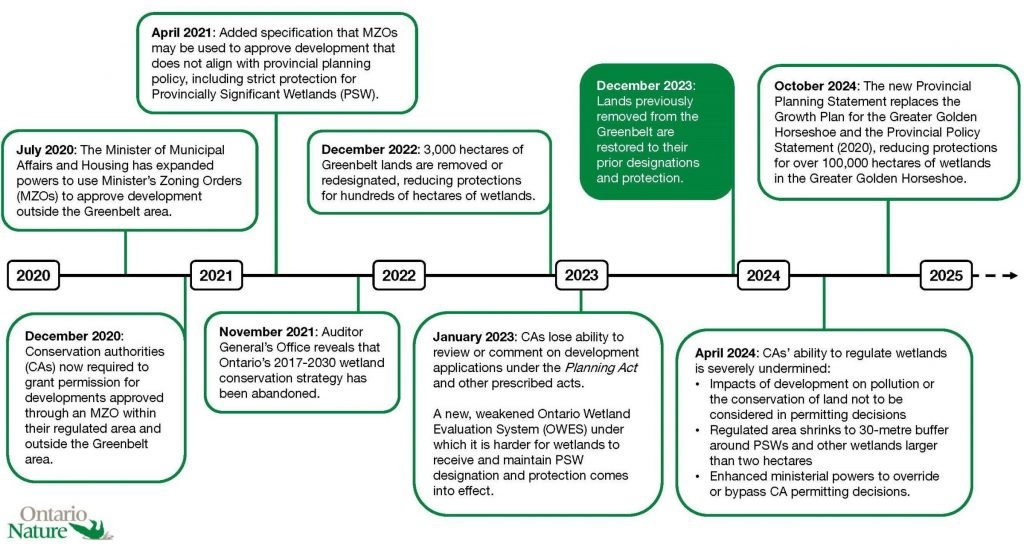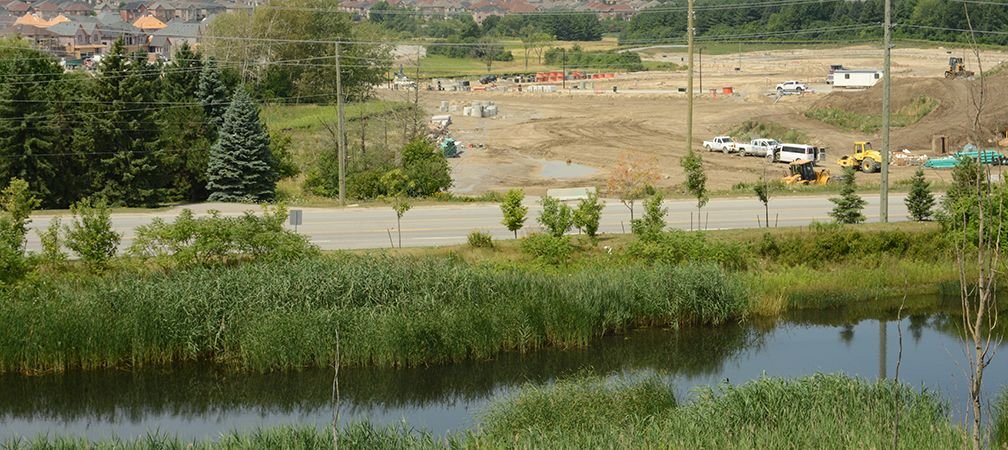World Wetlands Day, which is commemorated every February 2nd, this year is celebrating the theme of Protecting Wetlands for Our Common Future, a message which deeply resonates with Ontario Nature. With over 72% of the province’s wetlands lost as of 2002, Ontario Nature has released a new report – Wetland Conservation for Local Planning Authorities: A Review of Wise Practices in Southern Ontario to urge for stronger wetland protection.

Why Do Wetland Wise Practices Matter?
The case studies in this report highlight valuable contributions to wetland conservation across diverse regions. Every story aligns with one of seven categories, each addressing a beneficial wetland practice such as preventing wetland degradation, supporting private wetland stewardship and accounting for wetlands as natural assets.
The report’s wise practice examples provide valuable insight into some outstanding efforts to protect and conserve wetlands already taking place in Ontario. Municipalities across the province have the opportunity of adapting or building upon them to suit their local needs.

In the absence of provincial leadership, now it is more critical than ever for planning authorities to leverage their ability to protect wetlands. This issue is particularly imminent given the lack of comprehensive framework for wetland conservation in the province, which once existed, but it was quietly abandoned in 2021. Amid other changes such as the weakening of the Ontario Wetland Evaluation System, it is clear that wetland protection has significantly decreased since 2020. The graphic above outlines the changes which have fundamentally undermined wetland protections between 2020 and 2024.
Wetland Success Stories
Wise Practice: Town of Richmond Hill
In Richmond Hill, wetland policies demonstrate a strong commitment to conservation, with an explicit intent to protect all wetlands, regardless of their classification including those not designated as provincially significant. One key policy strictly prohibits development and site alteration on all wetlands in areas south of the Oak Ridges Moraine Conservation Plan. This creates a scenario which decreases the likelihood that any further wetland loss will occur in regions where this policy applies.
Wise Practice: County of Brant
The County of Brant’s Official Plan commits to build positive relationships with Indigenous Peoples and communities, along with creating more space for Indigenous voices in municipal decision-making processes involving wetlands and other ecosystems. For example, a requirement is held for all development permit applicants to provide funding to support Indigenous engagement related to development proposals affecting wetlands.
These two examples offer just a glimpse into the valuable insights and practices highlighted in this Wetland Wise Practices Report.

The Importance of Collaboration in Conservation
The report concludes with a section which offers advice for building networks of support in wetland conservation. While it acknowledges that local planning authorities play a significant role in wetland conservation, it emphasizes that building partnerships and working with a broad range of organizations and/or Indigenous communities is an even more effective approach. Potential contributors include academic institutions, local naturalist clubs and land trusts. In addition, many other groups hold unique perspectives and knowledge on these vital ecosystems and have the capacity and interest to contribute to meaningful change.
Please read and share the report with your networks to raise awareness about the importance of these critical ecosystems.
Ontario Nature will continue to advocate for the protection of wetland ecosystems across the province, and we invite you to join us by signing our action alert.
Your browser does not support iframes. Please visit https://ontarionature.good.do/restore-wetland-protections-in-ontario/email/
if(!window.jQuery){document.write(”);}
Resources
The post The Ultimate Guide to Wetland Conservation: Must-Know Insights for Planning Authorities appeared first on Ontario Nature.














